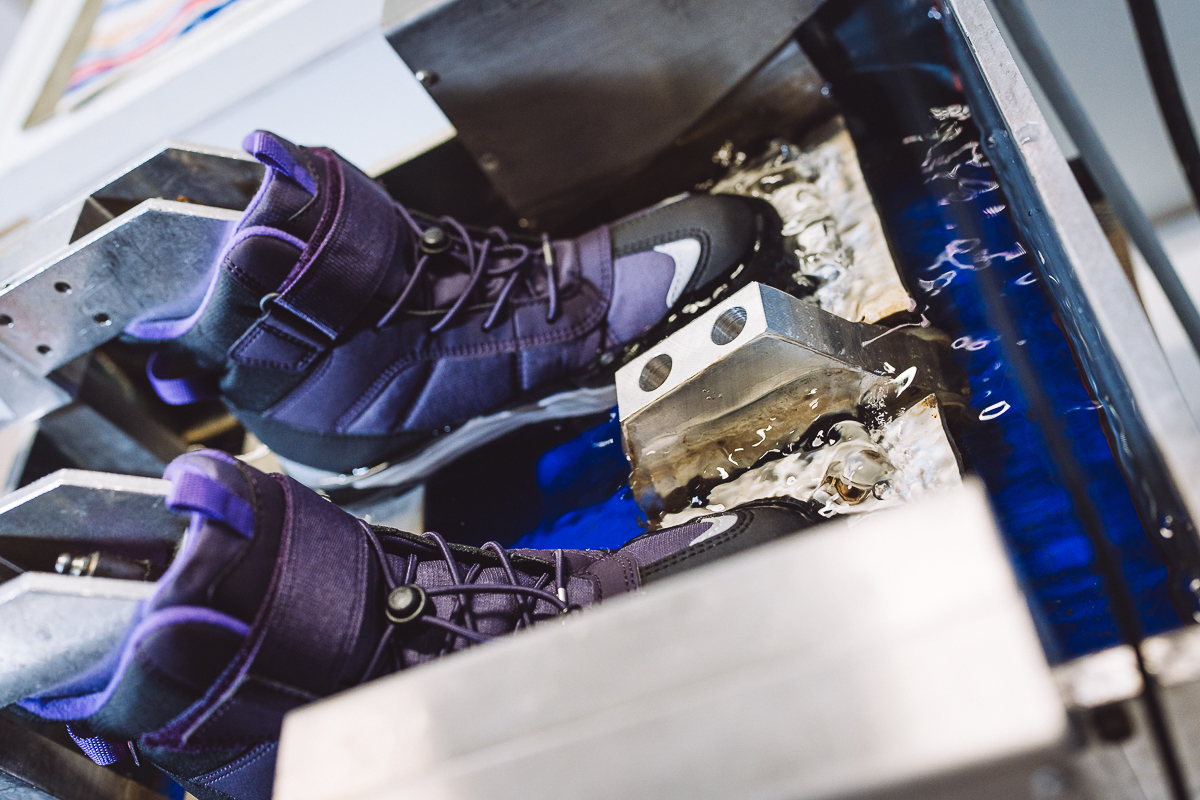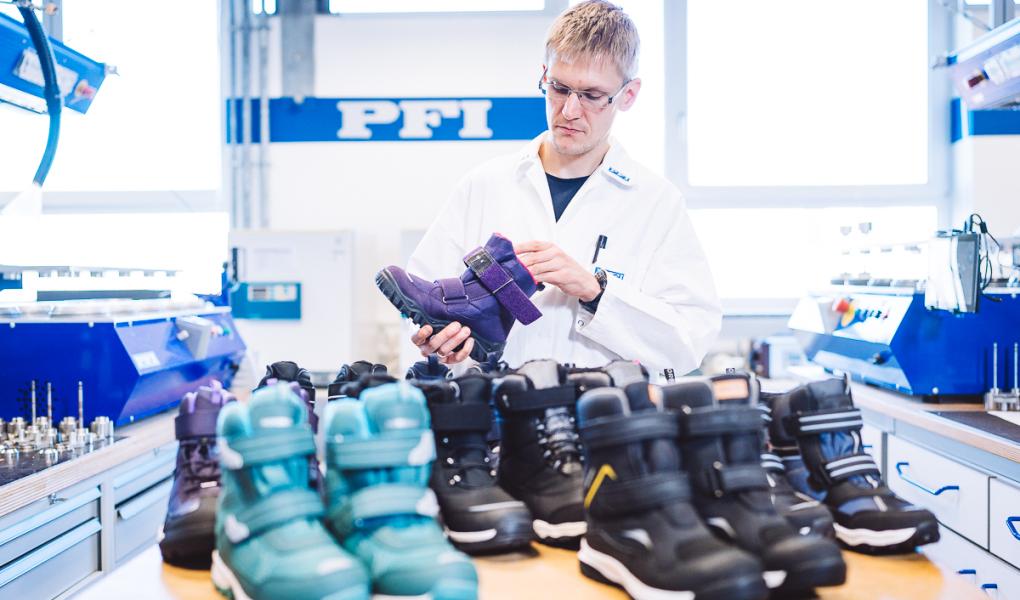The test contains the following parts:
- Water tightness
- Thermal insulation
- Drying
- Water vapor permeability
Water tightness
The shoe is mounted on an artificial foot and placed in a walking simulator. The gait simulator is placed in a tub filled with water up to a level of 2 cm on the last above the sole of the unbent shoe. The bending angle during testing is 30°, the frequency is 35 ± 5 bends per minute.
During the testing, the inside of the shoe is checked via an automatic transmitter.
If water penetrates the shoe, it emits a signal.

Thermal insulation
For the test, a measuring sensor is inserted into the conditioned shoe (conditioning at: 23°C, 50% relative humidity) and the shoe is filled with stainless steel balls. The instep of the shoe is sealed with insulating material so that the cold temperature in the climate chamber does not affect the test results through the instep. The initial temperature of the shoe is measured. Then it is put in the climate chamber, with a temperature of -20°C. 30 minutes later, the internal temperature of the shoe is measured again. The test report indicates the temperature drop between the initial temperature and the temperature after testing.

Drying the shoe
The shoes are exposed to a predetermined amount of water. Then the time it takes for the shoes to dry is measured.
This is done in standard laboratory climate, with 23 °C and 50% humidity.

Water vapor permeability upper/lining
A sample piece is quickly placed over an opening on a package of an absorbent desiccant and placed in a strong stream of air in a standard atmosphere.
The desiccant circulates constantly with the help of the air and the rotation of the container.
The container is weighed at the beginning and end of the test and the amount of moisture absorbed by the desiccant is determined by measuring the difference in weight.


